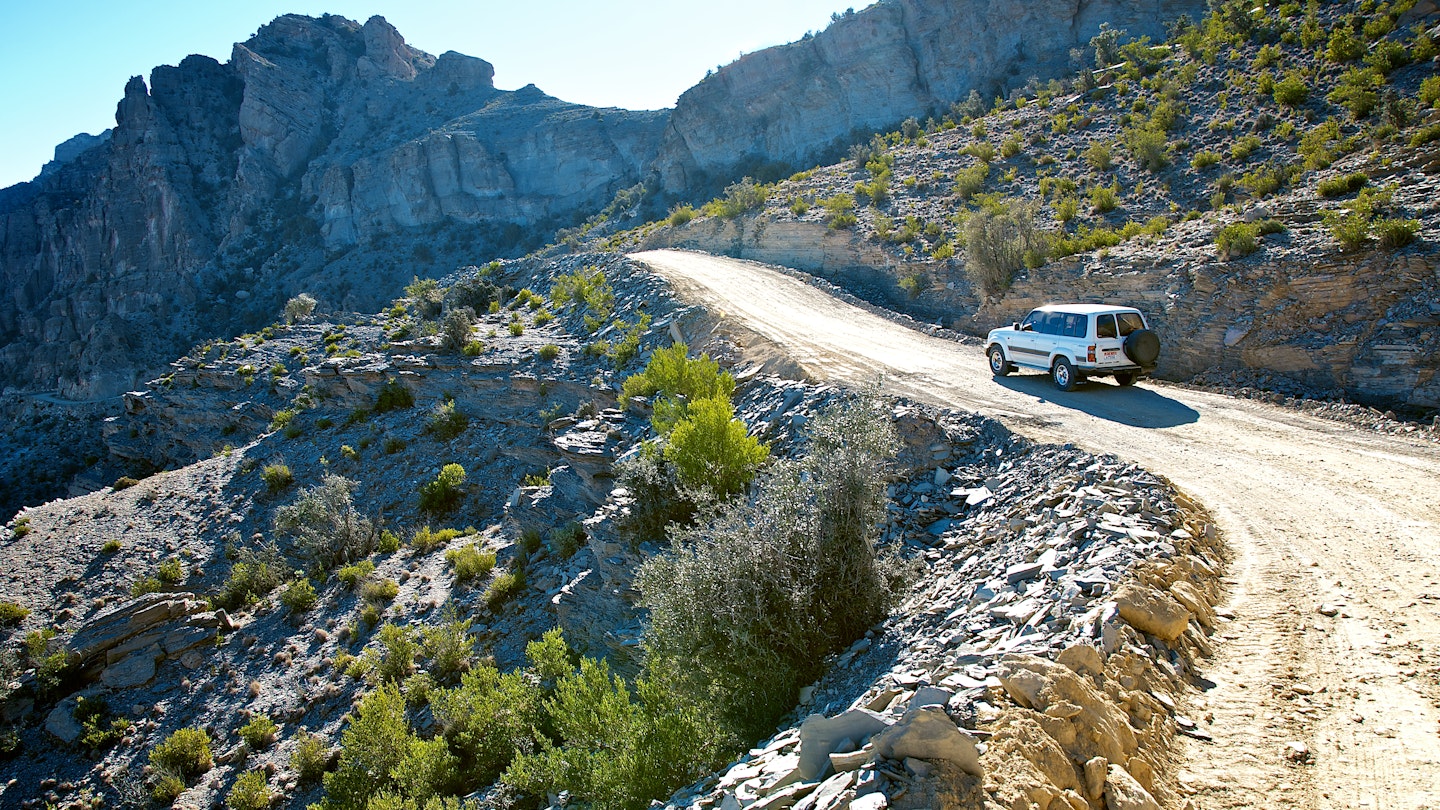Oman’s stunning landscapes are this country’s marquee attractions.
To truly appreciate the rose-gold desert dunes, trails crisscrossing mountainous terrain, white-sand beaches, quiet fishing villages, and rocky valleys with turquoise pools, exploring by car is the best choice.
While Oman’s public transportation system of buses and ferries can take you between the main cities and towns, a private ride is recommended if you want to delve deeper for nature experiences such as hiking, diving, or snorkeling – likely to be highlights of any trip here.
In addition to accessing remote areas around the country, getting around in Oman by car provides flexibility in your travel plans. There’s nothing quite like discovering an empty beach tucked away in a cove and spontaneously deciding to set up your tent under a starry sky.
If you plan a road trip across Oman’s regions – from the desert landscapes of Al Buraimi in the northwest, and coastal cities like Muscat and Sur, to fortified towns such as Nizwa and Bahla in the interior – you’ll need at least a week. Add another week to explore the beaches, verdant wadis (valleys), and nature reserves of the Dhofar region in the south, perhaps visiting a few islands along the way.
Cut Down Travel Time in Oman by Plane
Domestic flights significantly reduce travel times between certain regions, helping you avoid days of driving. Airlines like Oman Air operate flights between Muscat, Duqm, Salalah, and Khasab, while low-cost airlines provide convenient connections between major cities.

A Car is the Easiest, Most Flexible Way to See Oman
Renting a car is undoubtedly the easiest way to travel around Oman. It offers flexibility, great value, and access to remote locations that are otherwise difficult to reach. You’ll also have the freedom to wild-camp on public land, just bring a tent, food, and sleeping bag.
Cars can be rented from international chains or local companies, using your International Driving License. You’ll find a well-maintained network of paved roads connecting the major cities and regions. Vehicles are driven on the right-hand side, with lane discipline observed and traffic rules respected.
Road signs are in both English and Arabic, with speed limits set at 120km/h (75mph) on highways, 90km/h (55mph) on rural roads, and 40km/h (25mph) in residential areas. All roads are monitored with radars and speed cameras. Although you can navigate using Google Maps, the Waze app tends to be more accurate. There are numerous gas stations with stores and toilets along major routes.
From November to March, heavy rainfall, thunderstorms, and strong winds can lead to poor road conditions. During such times, roadways may become waterlogged and certain areas may flood, causing traffic congestion. Avoid camping along the coast when seas are rough during these months.
When planning your road trip, keep an eye on the weather and check official sources for any warnings about flash floods, sandstorms, or tropical cyclones.
Hailing a Taxi in Oman
Privately owned orange-and-white taxis are available in Muscat and other cities, easily found outside shopping malls, hotels, and tourist attractions. These taxis are safe, well-maintained, and comfortable, though they are unmetered, so fares must be negotiated prior to riding. Mwasalat taxis, characterized by their red-and-white livery, offer a metered option.
English is commonly spoken in Muscat, and drivers are familiar with landmarks and tourist sights; otherwise, showing the location on a smartphone map can be helpful. It is possible to hire a private taxi for intercity travel as well.
Local apps such as Oman Taxi and Marhaba Oman taxi are available for smartphone users, allowing for easier ride coordination.
Budget Travelers Should Consider the Bus
The government-owned Mwasalat operates public buses that are clean, comfortable, safe, and air-conditioned. They connect cities like Muscat and Salalah, as well as inter-city travel across Oman.
Fares are affordable, ranging from OR2 (US$5.20) to OR26 (US$67.50), and tickets can be easily purchased on board. Their mobile app provides journey planning and maps, making bus travel an excellent budget-friendly option.

Explore the Coastal Islands by Boat
Ferry services from the mainland enable visits to Oman’s coastal islands, offering dive sites teeming with marine life, nature reserves, and unspoiled beaches. Mwasalat operates a ferry service between Masirah Island and Shannah Port on the southeastern coast.
The most straightforward way to reach the Daymaniyat Islands is through local operators, which organize trips for diving, snorkeling, and other water sports from various marinas.
Accessible Transportation in Oman
Most Mwasalat buses are wheelchair accessible, ensuring everyone can enjoy the travel opportunities. For road travel, renting an accessible vehicle with a hired driver is generally more convenient than traditional rental options.
In Muscat, newer international hotels, shopping malls, and tourist sights are accessible, with designated parking spaces for individuals with disabilities.





